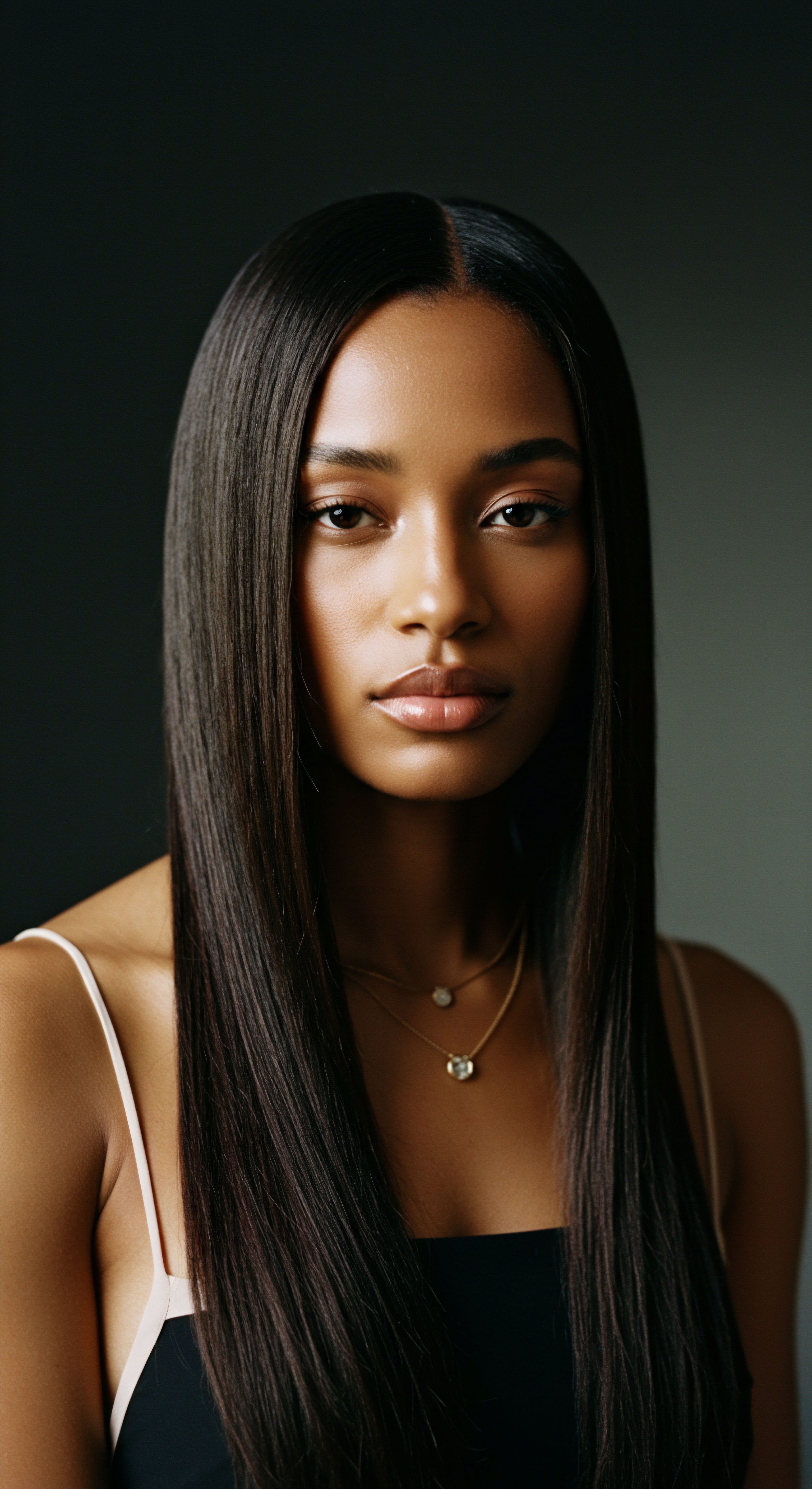
Roots
As dusk descends and the world quiets, a subtle transformation begins, not only in the air around us but also within the delicate strands that crown our heads. For generations, whispers of nighttime rituals have passed through hands, from grandmother to grandchild, carrying an unspoken wisdom about preserving hair’s intrinsic vitality. It is a quiet understanding that the hours of rest, those seemingly passive moments, hold a profound influence over the very essence of our hair’s moisture balance.
This understanding stems from the fundamental architecture of hair itself, a complex interplay of protein structures and lipid layers that constantly seek equilibrium with their surroundings. The night, with its prolonged contact against various surfaces, presents both a challenge and an opportunity for these delicate strands.
Consider the hair shaft, a marvel of biological engineering. Each strand possesses an outer layer, the cuticle, composed of overlapping scales, much like shingles on a roof. When these scales lie flat and smooth, they seal in moisture, granting hair its sheen and pliability. When disrupted, they lift, allowing precious hydration to escape and external elements to penetrate.
The internal structure, the cortex, holds the majority of the hair’s moisture and protein, its health directly tied to the integrity of that protective cuticle. This foundational understanding sets the stage for appreciating how external factors, particularly those encountered during sleep, can either fortify or compromise this delicate system.
The quiet hours of sleep hold a profound influence over hair’s intrinsic moisture balance.
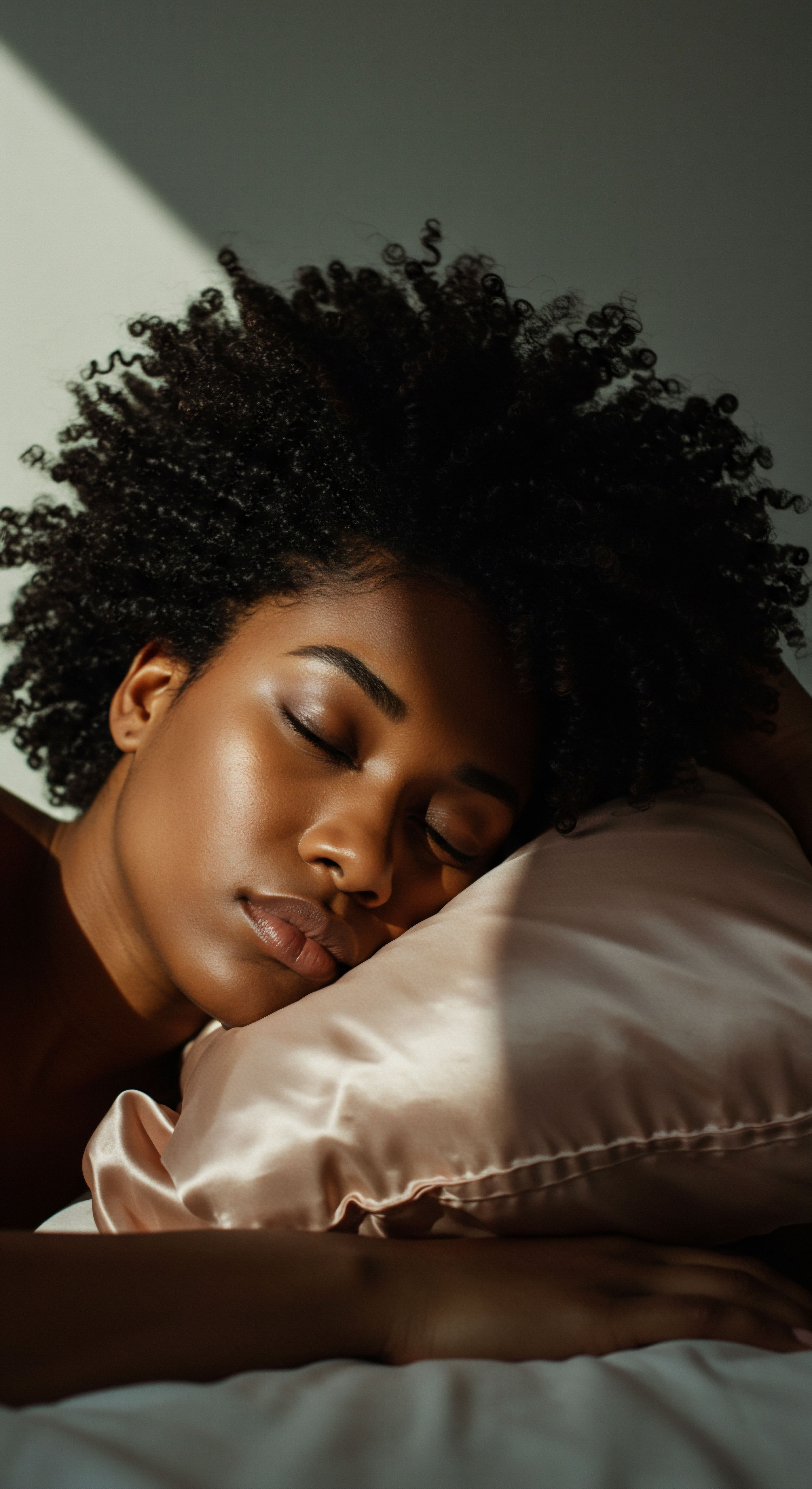
Hair Anatomy and Its Vulnerability
The very composition of textured hair, with its unique coil patterns and often higher porosity, renders it particularly susceptible to moisture loss. The bends and curves along a coily strand mean the cuticle scales do not lie as flat as on straight hair, creating more opportunities for moisture to evaporate. Furthermore, the natural oils produced by the scalp, known as sebum, often struggle to travel down the entire length of a coily strand, leaving the ends more prone to dryness. This inherent predisposition makes thoughtful nighttime protection not merely a preference, but a vital component of a holistic hair care regimen.
- Cuticle Integrity ❉ The outermost layer of the hair, composed of overlapping scales, dictates how well moisture is retained.
- Cortical Hydration ❉ The internal core of the hair strand, where the majority of moisture resides, relies on a sealed cuticle for its health.
- Sebum Distribution ❉ Natural scalp oils struggle to travel down textured hair, making ends prone to dryness.
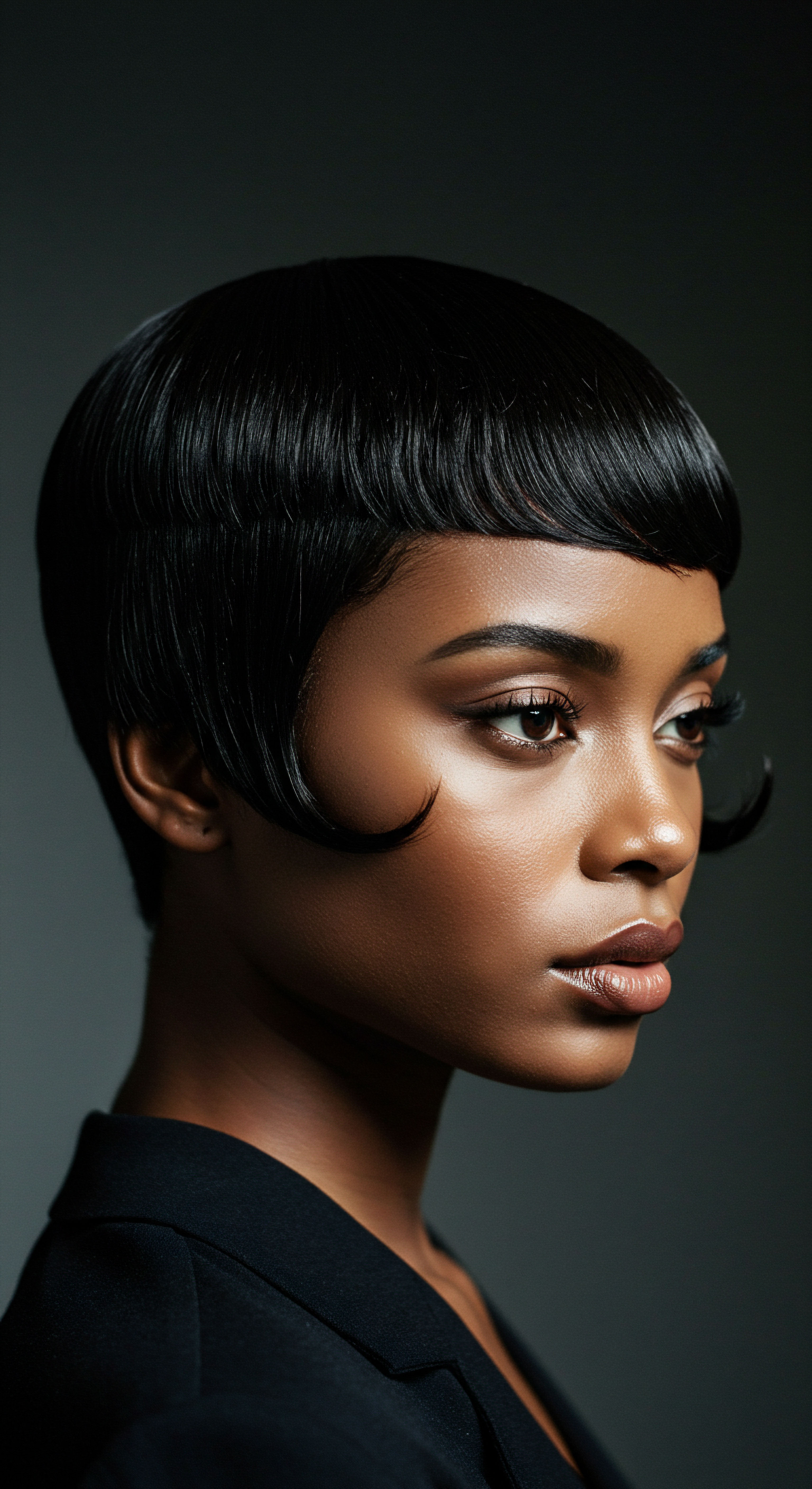
The Night’s Environmental Impact
Our sleeping environment, often overlooked, exerts a considerable impact on hair’s moisture. The typical cotton pillowcase, for instance, acts as a silent thief of hydration. Its absorbent fibers readily wick away moisture from hair strands, leaving them parched and vulnerable.
This constant friction against cotton also roughens the cuticle, causing those protective scales to lift, further accelerating moisture loss and contributing to tangling and breakage. The mechanical stress imposed by tossing and turning against such a surface can be significant, especially for hair types that are already prone to dryness and fragility.
Consider the sheer duration of sleep; typically six to eight hours. Over this extended period, repetitive contact with an abrasive surface can systematically strip hair of its vital moisture and compromise its structural integrity. The cumulative effect of nightly moisture depletion can lead to chronic dryness, reduced elasticity, and increased susceptibility to damage. This understanding underscores the critical role of choosing sleep accessories that work with, rather than against, hair’s natural inclination to retain hydration.
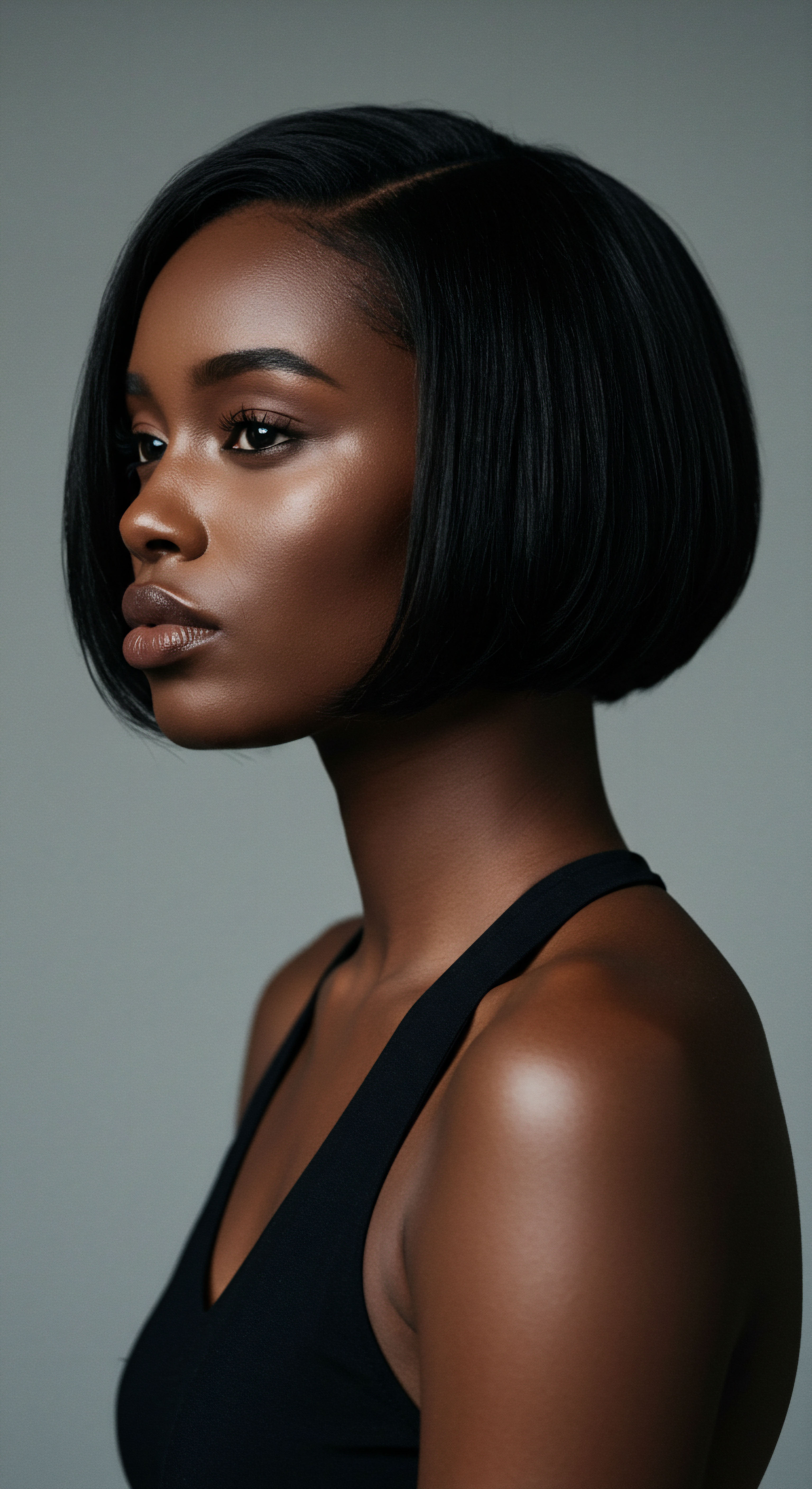
Ritual
As we transition from the foundational understanding of hair’s delicate nature, our attention turns to the deliberate practices that can shield and sustain its moisture through the night. These are the rituals, often simple yet profoundly impactful, that transform sleep from a period of potential depletion into an opportunity for restoration. It is a conscious choice to prepare our strands for the night, ensuring they are cradled in an environment that respects their need for hydration and minimizes mechanical stress. This section delves into the practical wisdom of selecting and utilizing sleep accessories, transforming a passive nightly routine into an active act of care.
The choice of sleep accessory represents a quiet commitment to hair wellness. For many with textured hair, this commitment has been a long-standing tradition, passed down through generations, predating modern scientific explanations. The effectiveness of these tools lies in their ability to reduce friction and maintain a consistent, humid microclimate around the hair. By minimizing contact with absorbent surfaces and preventing excessive movement, they help preserve the hair’s natural moisture content, allowing it to remain supple and resilient.
Selecting the right sleep accessory transforms a passive nightly routine into an active act of hair care.
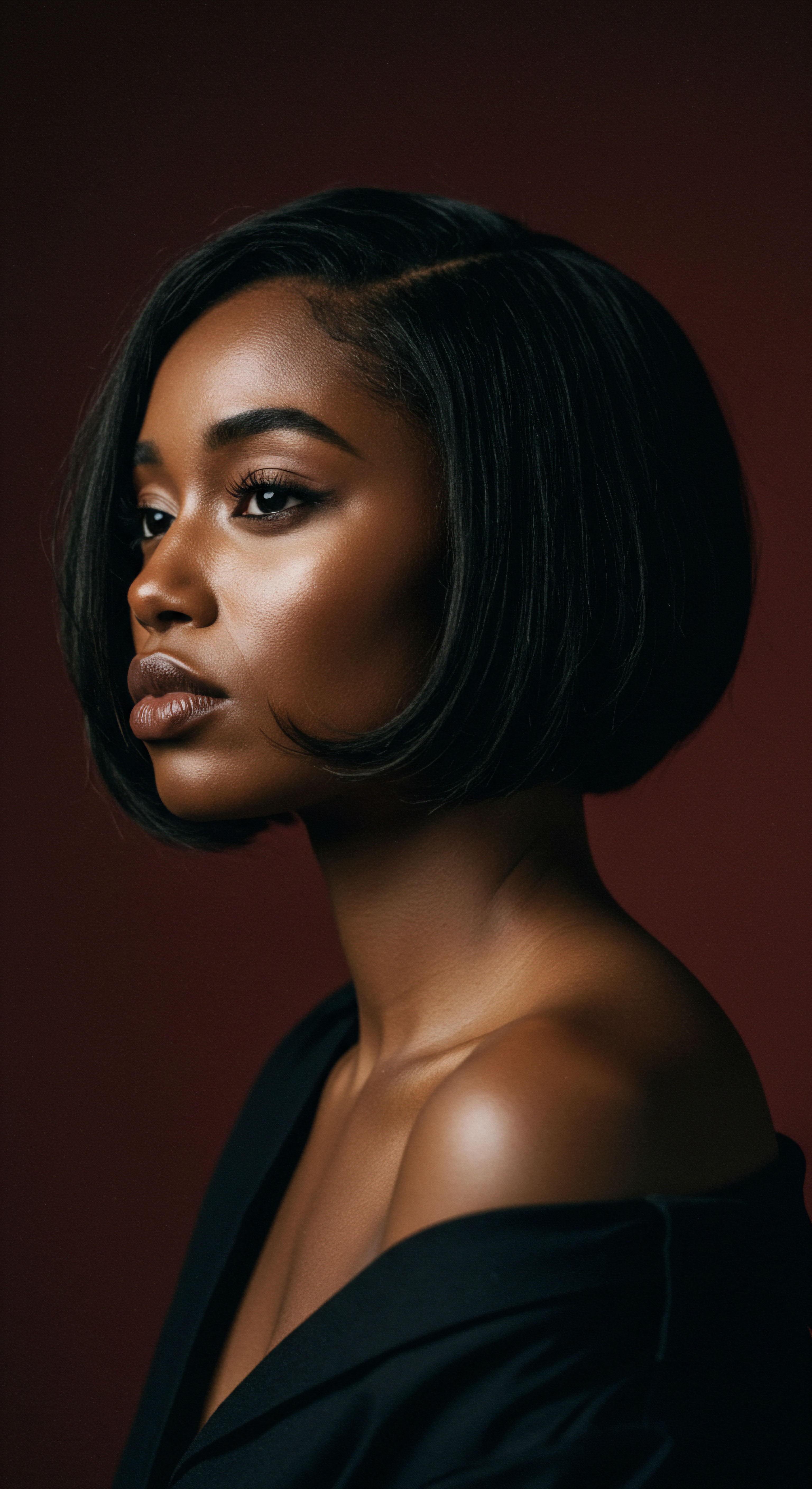
Which Fabrics Protect Hair’s Moisture?
The material composition of sleep accessories stands as a primary determinant of their influence on hair’s moisture balance. Silk and Satin emerge as the champions in this arena. Unlike cotton, which possesses a porous fiber structure, silk and satin feature smooth, tightly woven surfaces.
This inherent smoothness significantly reduces friction against hair strands, preventing the lifting of the cuticle scales that leads to moisture loss and tangling. Furthermore, these materials are less absorbent than cotton, meaning they do not wick away the hair’s natural oils or applied products.
A study published in the Journal of Cosmetic Science, while not directly addressing sleep accessories, has shown that surfaces with lower coefficients of friction can reduce hair fiber damage, a principle directly applicable to the benefits of silk and satin pillowcases. This scientific observation supports the anecdotal evidence cherished within textured hair communities for generations.
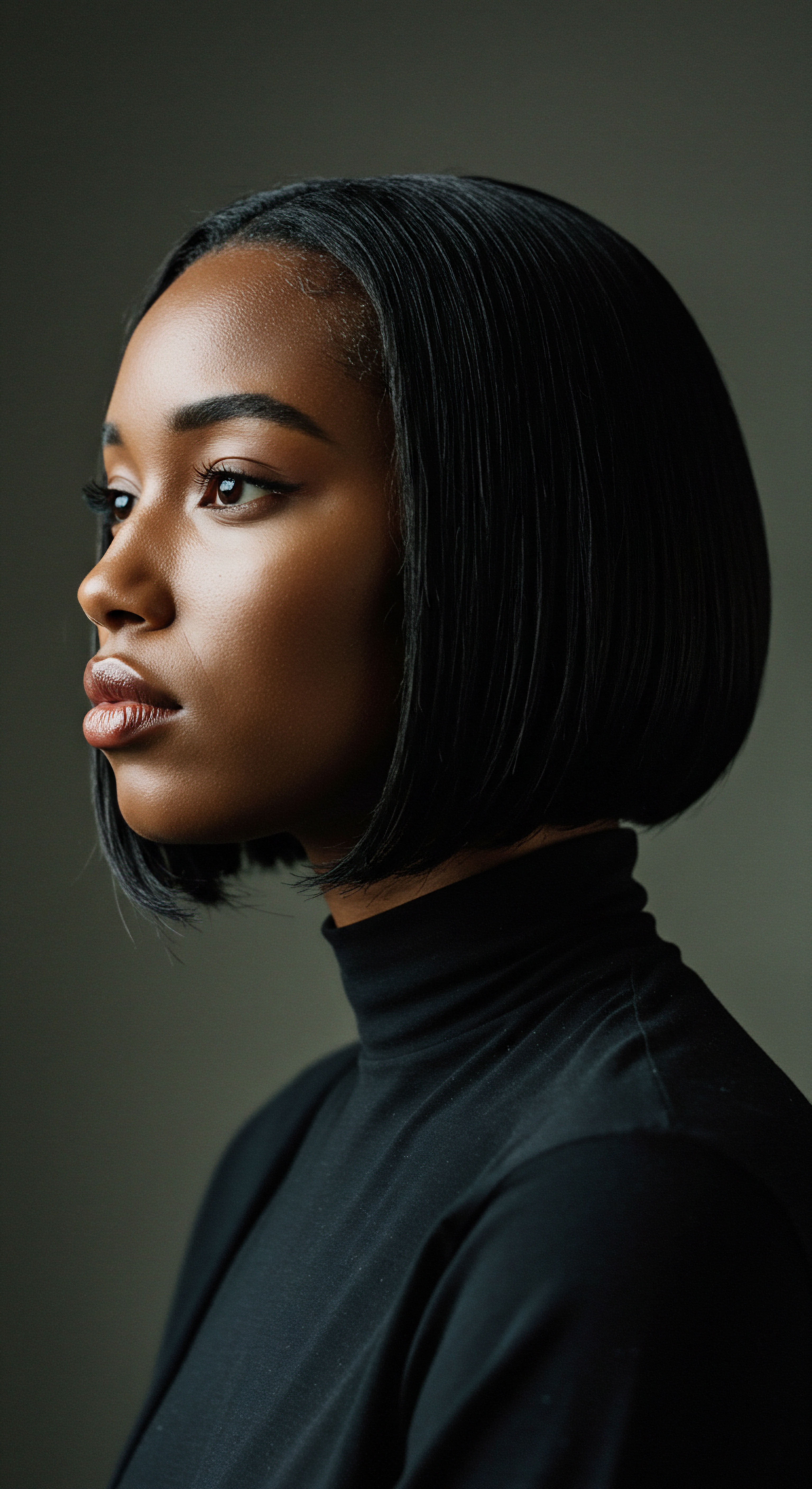
Comparing Sleep Accessory Materials
| Material Silk |
| Friction Level Very Low |
| Moisture Absorption Low |
| Hair Benefits Reduces frizz, preserves moisture, prevents tangles, minimizes breakage. |
| Material Satin |
| Friction Level Low |
| Moisture Absorption Low |
| Hair Benefits Similar to silk, a more accessible alternative, reduces friction and moisture loss. |
| Material Cotton |
| Friction Level High |
| Moisture Absorption High |
| Hair Benefits Increases frizz, wicks moisture, causes tangles, leads to breakage. |
| Material Silk and satin offer superior protection against friction and moisture loss compared to cotton. |
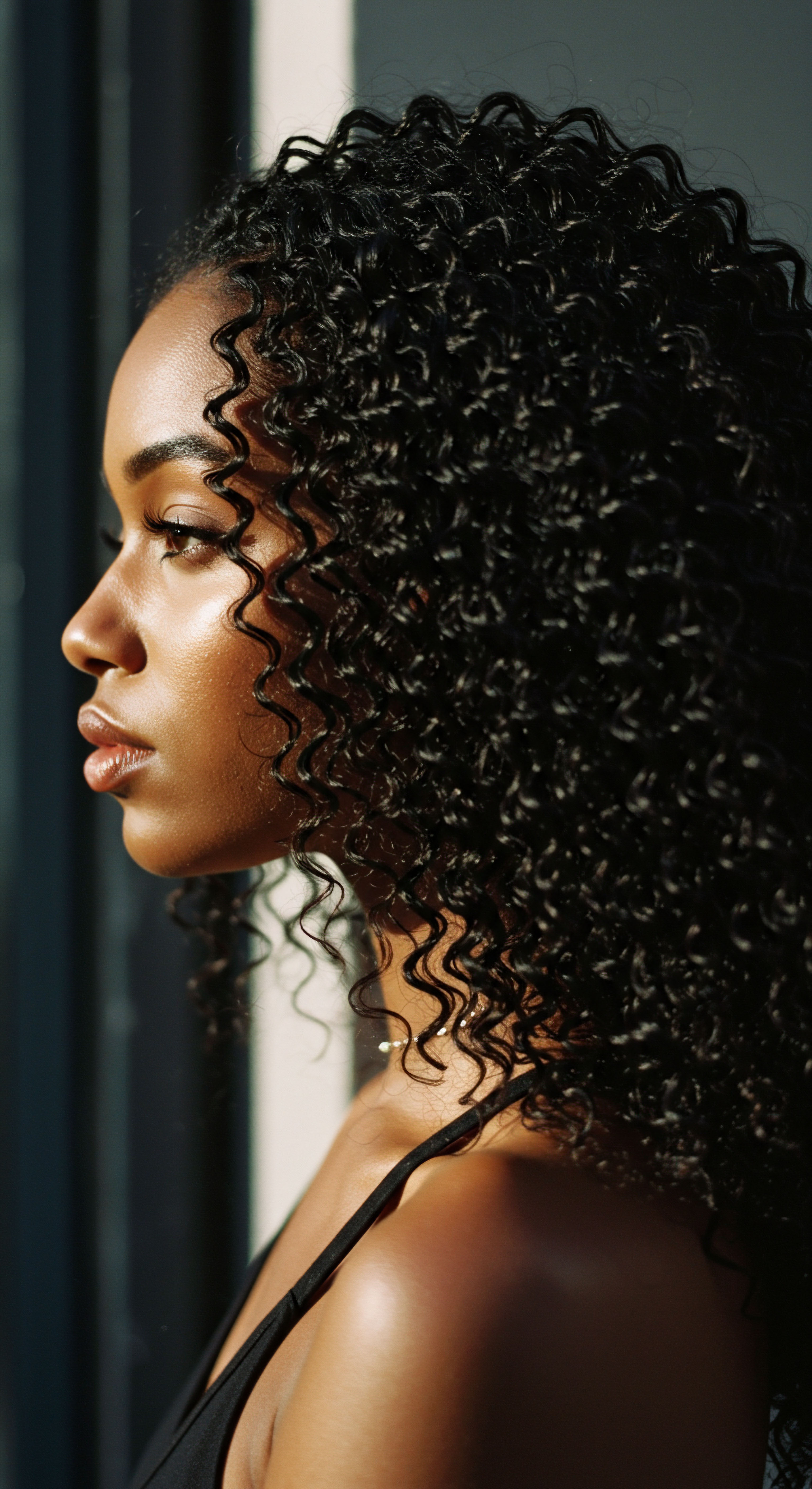
The Art of Wearing a Bonnet or Scarf
Beyond pillowcases, the use of a Bonnet or Scarf provides an additional layer of protection, particularly for those with voluminous or highly textured hair. These accessories encapsulate the hair, creating a contained environment that further reduces friction against bedding and helps to maintain a consistent humidity level around the strands. The method of tying or placing these coverings also plays a role in their effectiveness. Ensuring the hair is not pulled too tightly at the hairline and that the accessory remains secure throughout the night prevents unnecessary stress and ensures consistent coverage.
For many, the nightly donning of a bonnet or scarf is more than a practical step; it is a ritualistic act of self-care, a quiet moment of preparation for the restorative power of sleep. This practice helps preserve styled hair, extending its life and reducing the need for daily manipulation, which in itself can contribute to moisture loss and damage.
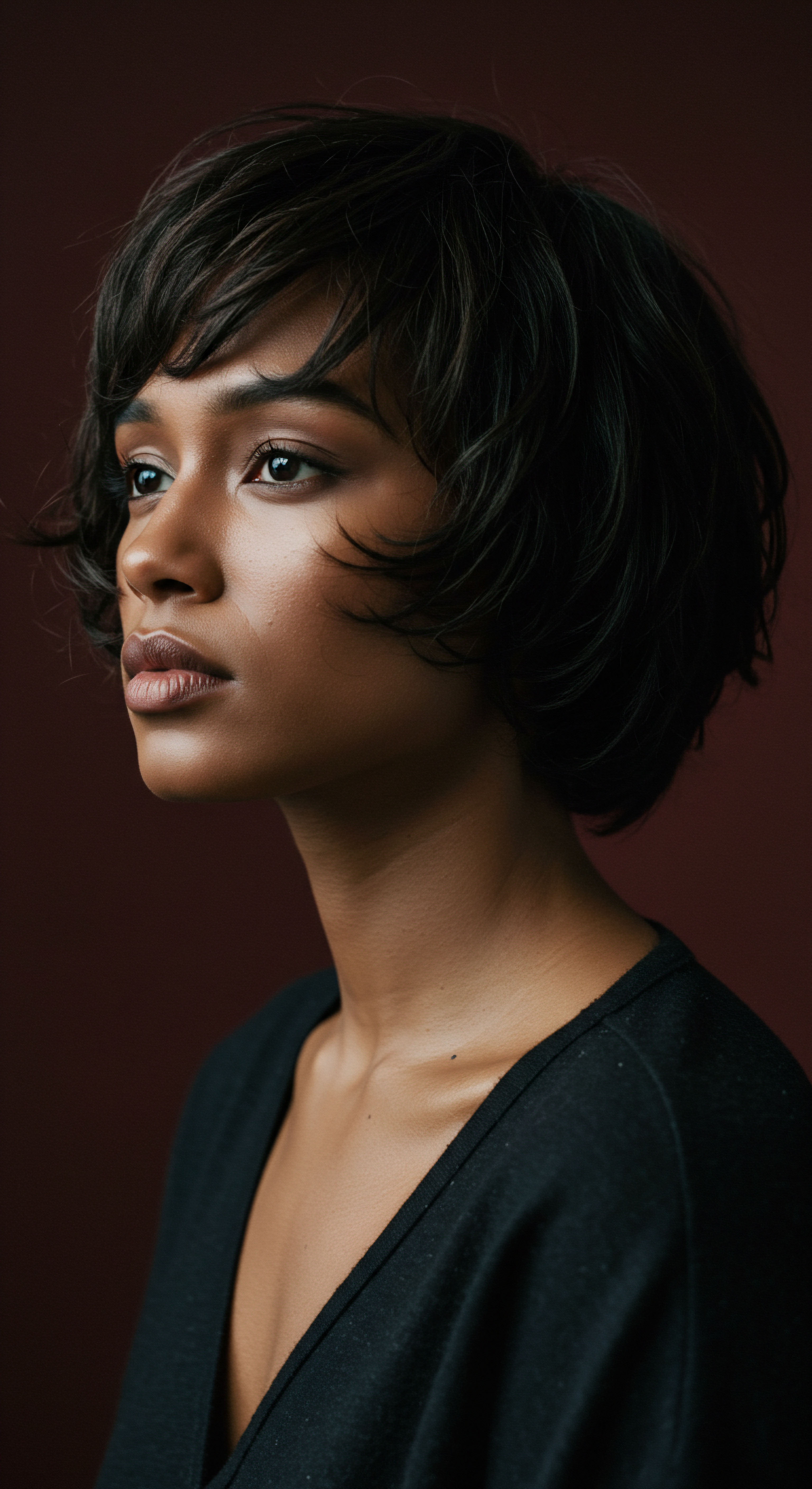
Relay
Having explored the foundational elements of hair anatomy and the practical applications of sleep accessories, we now turn our gaze to the deeper, interconnected forces at play in hair’s moisture equilibrium. This section invites a more sophisticated understanding, drawing upon the intricate interplay of biological mechanisms, environmental influences, and even cultural legacies that shape our hair’s nightly experience. It is here that we truly connect the quiet hum of cellular activity with the deliberate choices we make for our strands, moving beyond surface-level observations to a profound appreciation of hair’s resilience and vulnerability.
The influence of sleep accessories extends beyond simple friction reduction; they participate in a complex biological relay, impacting everything from the hair’s lipid barrier to the efficacy of applied conditioning treatments. This relay involves not only the physical interaction but also the creation of a microclimate that can either aid or hinder the hair’s natural restorative processes during rest. The subtle shifts in humidity and temperature within a bonnet, for example, can significantly alter the rate of water evaporation from the hair shaft, a factor often overlooked in daily hair care discussions.
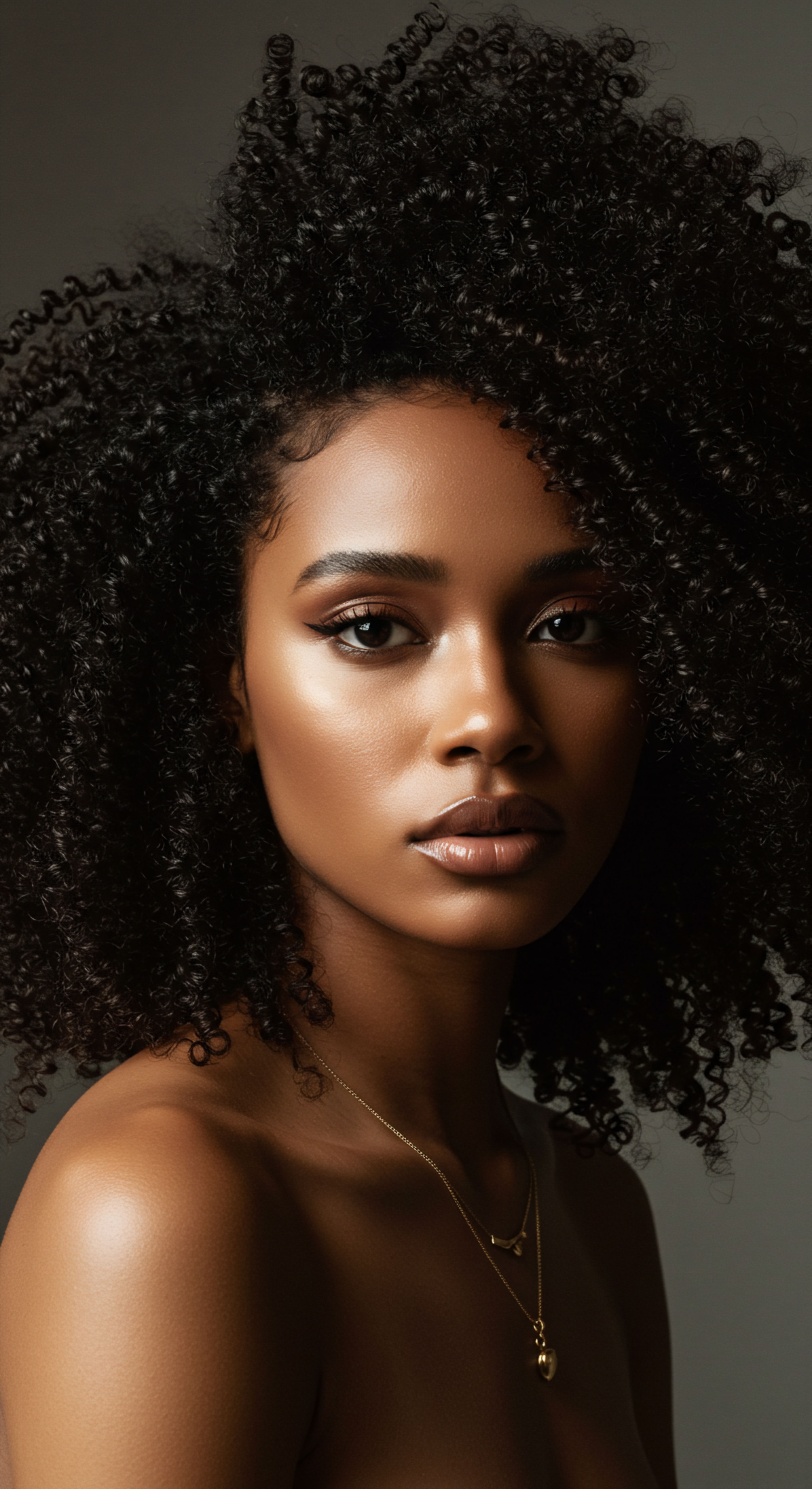
How Does Friction Impact Hair’s Hydrophobicity?
The surface of healthy hair possesses a natural Hydrophobicity, meaning it repels water to a certain degree, a property crucial for maintaining moisture balance. This characteristic is primarily conferred by the outermost lipid layer of the cuticle, the F-layer. When hair rubs against an abrasive surface, such as a cotton pillowcase, this delicate lipid layer can be abraded or even stripped away. This damage compromises the hair’s natural barrier function, making it more hydrophilic and thus more prone to absorbing excessive water from the environment, leading to swelling, and subsequently, losing that water just as quickly.
A 2018 review published in the International Journal of Trichology discussed the importance of the cuticle’s lipid layer in maintaining hair health and preventing damage. While the review primarily focused on chemical treatments, its principles underscore how physical abrasion from sleep surfaces can similarly disrupt this protective layer, leading to increased porosity and a compromised moisture barrier. The cumulative effect of nightly abrasion can lead to a state of chronic dryness and heightened susceptibility to environmental stressors, necessitating more intensive conditioning and repair efforts during waking hours.
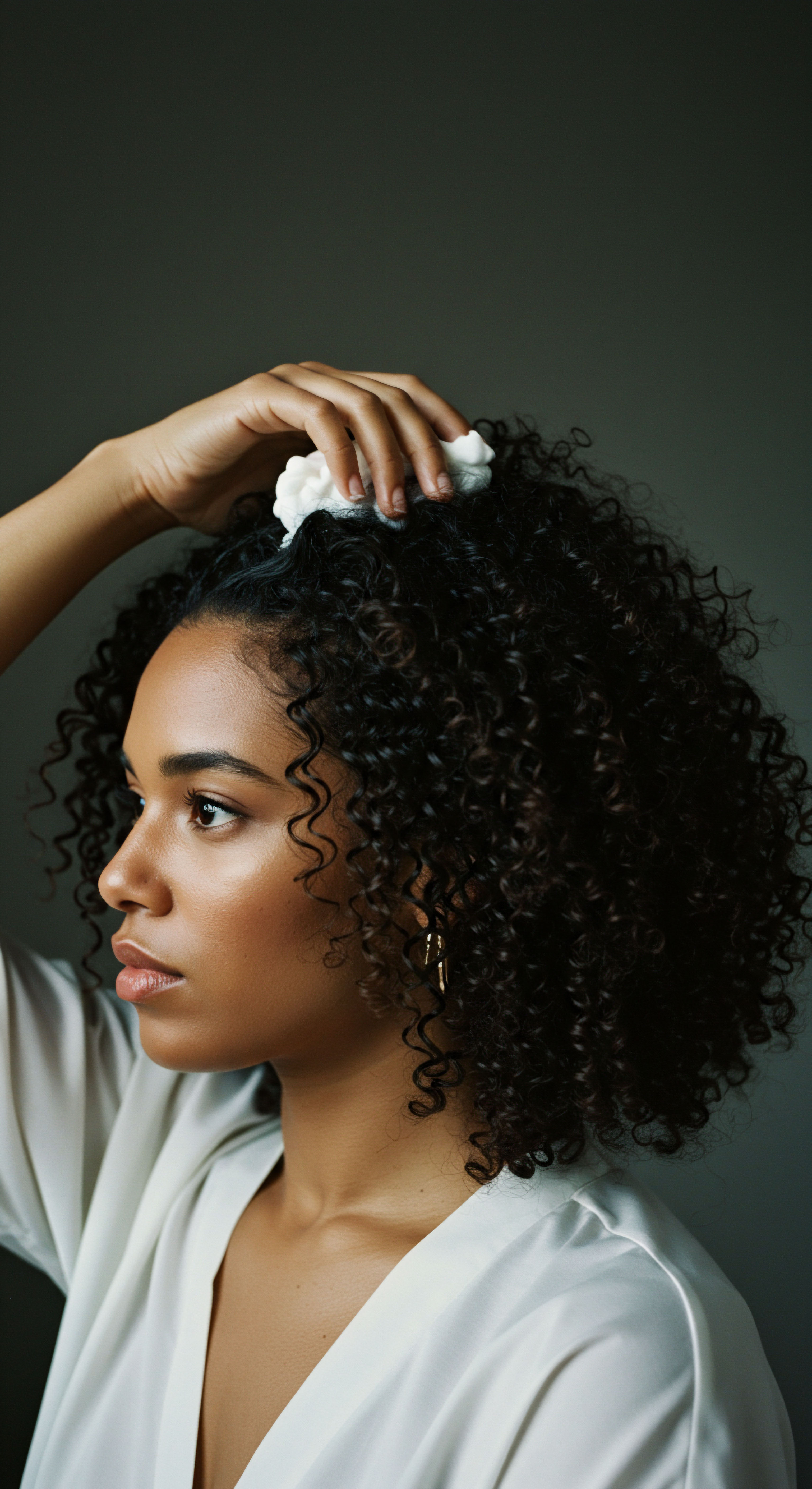
Microclimate and Product Efficacy
The enclosed environment created by a silk bonnet or scarf also plays a subtle yet significant role in product efficacy. When leave-in conditioners, oils, or stylers are applied before bed, the accessory helps to seal them in, preventing them from being absorbed by bedding or evaporating too quickly. This creates a more prolonged contact time between the product and the hair, allowing active ingredients to penetrate more deeply and perform their function more effectively. This enhanced absorption contributes to better moisture retention and overall hair health.
Consider a scenario where a deeply moisturizing hair mask is applied. Without proper overnight protection, a significant portion of the product could be lost to the pillowcase. However, within the confines of a smooth, non-absorbent bonnet, the product remains on the hair, allowing for maximum absorption and benefit. This synergy between product application and sleep accessory use optimizes the nightly restorative process.
The microclimate created by sleep accessories optimizes product absorption and prolongs hydration.
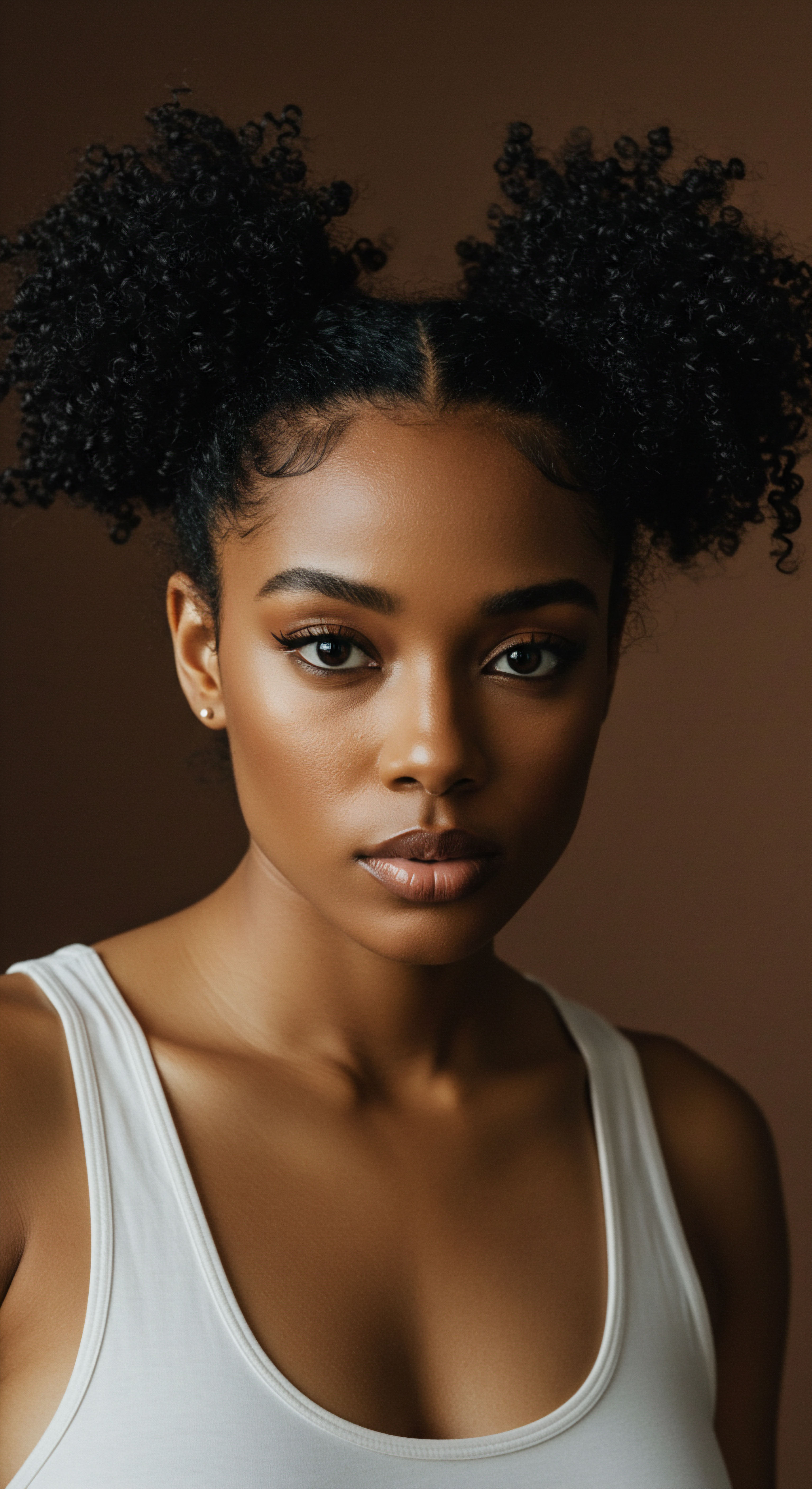
Cultural Significance of Nighttime Hair Care
Beyond the scientific explanations, the practice of protecting hair during sleep carries deep cultural significance, particularly within Black and mixed-race communities. For centuries, head coverings have served various purposes, from religious observance to social status, and crucially, as a means of hair preservation. The bonnet, the durag, and the intricately wrapped scarf are not merely functional items; they are artifacts of heritage, embodying resilience, ingenuity, and a profound respect for hair as a crown.
These traditions speak to an ancestral knowledge of hair’s needs, predating modern trichology. The nightly ritual of wrapping hair before sleep is a quiet act of continuity, connecting individuals to a lineage of care and protection. It is a tangible link to practices that ensured hair health in diverse climates and circumstances, long before the advent of commercial hair products. This cultural context enriches our understanding of sleep accessories, elevating them beyond mere tools to symbols of identity and enduring wisdom.
The practice also serves as a form of self-preservation and self-love. In a world that often imposes Eurocentric beauty standards, the deliberate care of textured hair, especially during vulnerable sleeping hours, becomes an affirmation of its unique beauty and strength. This intentionality reinforces a positive relationship with one’s hair, contributing to a sense of well-being that extends beyond physical appearance.

Reflection
The journey through hair’s nocturnal life reveals a compelling story, one where the quiet hours of sleep hold profound sway over our strands’ vitality. From the intricate dance of the cuticle to the purposeful selection of silk, and the enduring wisdom of cultural traditions, each layer deepens our appreciation for the subtle yet powerful influence of sleep accessories. It becomes clear that hair’s moisture balance is not a static state, but a dynamic equilibrium, constantly shaped by our environment and our choices. The commitment to nightly hair protection, then, is more than a routine; it is an act of deep reverence for the delicate beauty that rests upon our shoulders, a quiet acknowledgment of its needs, and a celebration of its enduring strength.
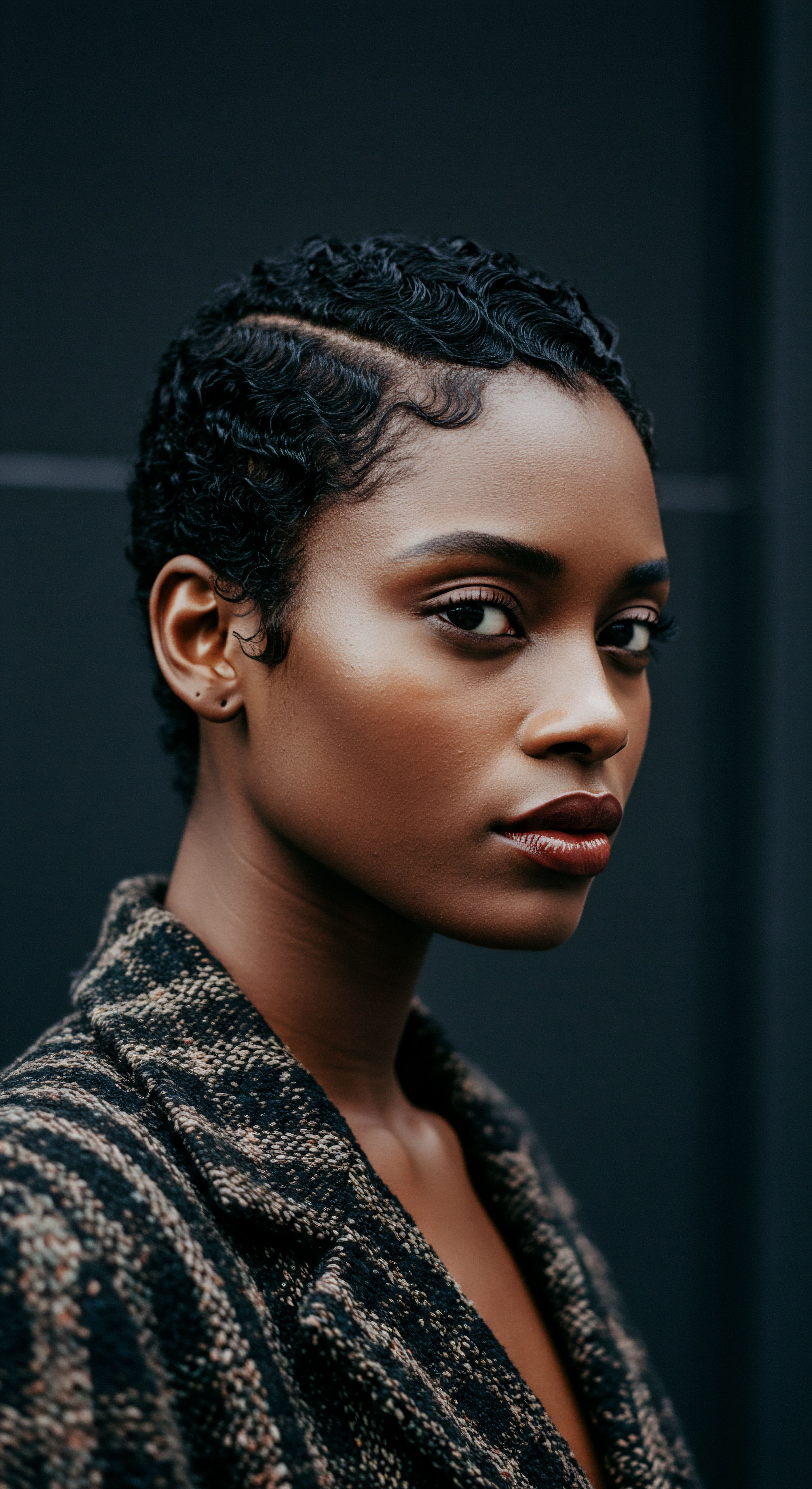
References
- Robbins, Clarence R. Chemical and Physical Behavior of Human Hair. 5th ed. Springer, 2012.
- Gavazzoni Dias, Maria Fernanda. “Hair Cosmetics ❉ An Overview.” International Journal of Trichology, vol. 7, no. 1, 2015, pp. 2-15.
- Hotting, Stefan, et al. “Tribological Properties of Human Hair Fibers.” Journal of Cosmetic Science, vol. 60, no. 5, 2009, pp. 527-539.
- Khumalo, Ncoza D. and Antonella Tosti. Hair and Scalp Diseases ❉ An Illustrated Guide. 2nd ed. Wiley Blackwell, 2020.
- Pugh, Jonathan, et al. “The Structure and Mechanical Properties of Human Hair.” Journal of Biomechanics, vol. 47, no. 12, 2014, pp. 3087-3093.
- Wagner, R. F. and H. L. Miller. “Friction of Human Hair.” Journal of the Society of Cosmetic Chemists, vol. 32, no. 1, 1981, pp. 3-10.
- Trueb, Ralph M. Hair ❉ Its Structure and Role in Health and Disease. Karger, 2017.